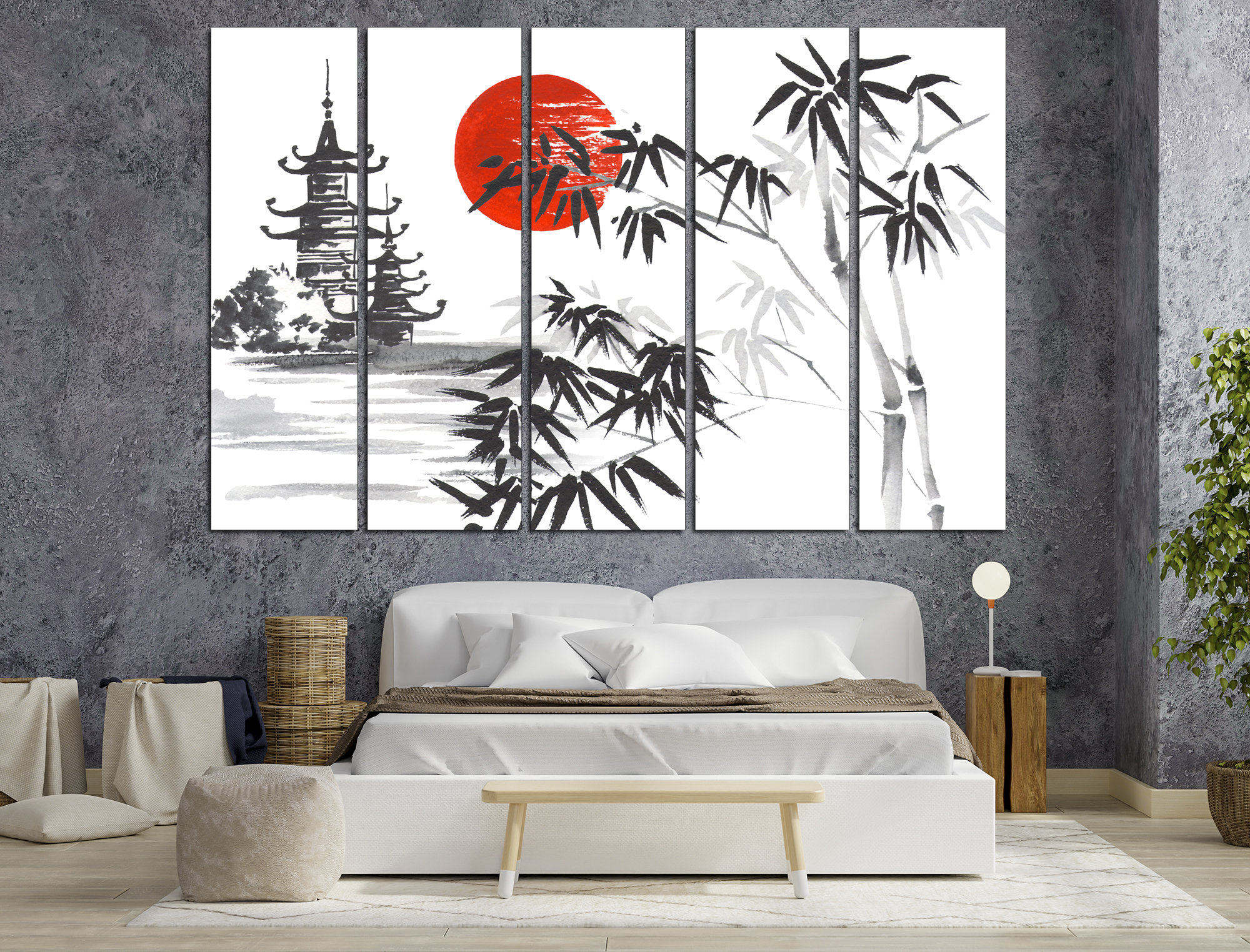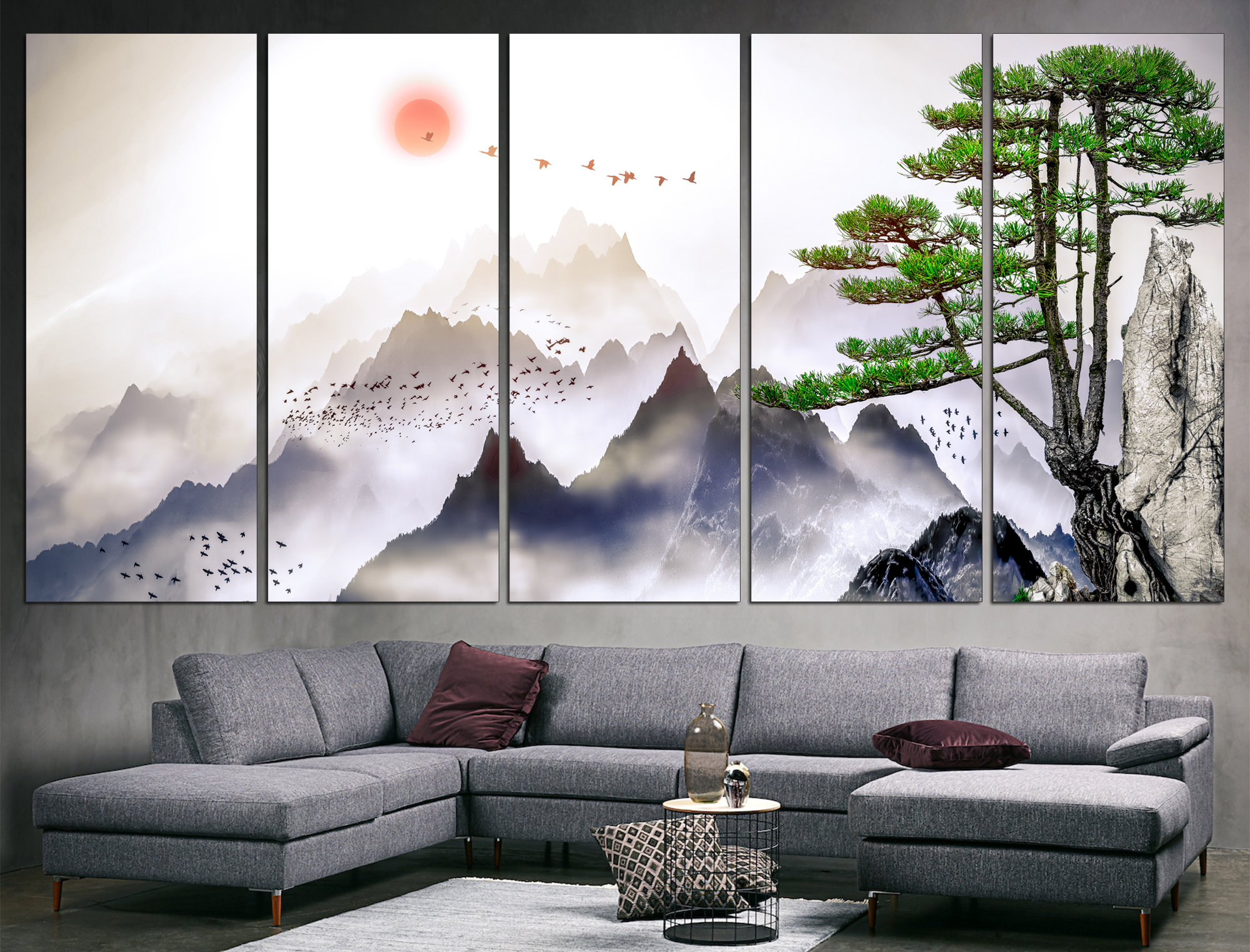Japanese wall art decor brings a unique blend of culture, nature, and elegance to any living space. In this comprehensive guide, I’ll share insights from my personal experience and delve deeper into the artistic techniques, styles, and ways to incorporate this beautiful art form into your home. From traditional Ukiyo-e prints to modern interpretations, Japanese wall art is a versatile decor option that can suit various tastes and styles.
Understanding Japanese Wall Art Decor
Japanese wall art is characterized by its intricate designs and deep symbolism, often reflecting the beauty of nature, spirituality, and the everyday life of the Japanese people. It embodies a sense of harmony, balance, and tranquility, making it a perfect choice for creating a serene atmosphere in your home.
The History of Japanese Wall Art
The history of Japanese wall art can be traced back centuries, evolving through various periods such as the Heian (794-1185), Kamakura (1185-1333), and Edo (1603-1868) periods. Each era contributed to the richness and diversity of Japanese art styles, including traditional ink paintings, woodblock prints, and contemporary art forms.
Common Themes in Japanese Wall Art
- Nature: Flowers, mountains, and landscapes are frequent subjects.
- Animals: Koi fish, cranes, and mythical creatures like dragons.
- Seasons: Many artworks reflect the changing seasons, celebrating their beauty.
- Spirituality: Religious themes and symbols, such as Zen Buddhism and Shinto.
Types of Japanese Wall Art Decor
There are several popular types of Japanese wall art that you can choose from, each offering a unique aesthetic and atmosphere:

Ukiyo-e Prints
Ukiyo-e, or “pictures of the floating world,” is a traditional woodblock printing technique that flourished from the 17th to the 19th century. These prints often depict landscapes, kabuki actors, and beautiful women.
Pros and Cons of Ukiyo-e Prints
| Pros | Cons |
|---|---|
| Rich history and cultural significance | Can be expensive, especially originals |
| Wide variety of subjects and styles | Reproductions may lack authenticity |

Japanese Calligraphy (Shodo)
Shodo, or the art of beautiful writing, is an expressive form where brush strokes convey emotion and meaning. It can range from simple characters to elaborate compositions.
Pros and Cons of Japanese Calligraphy
| Pros | Cons |
|---|---|
| Unique and personal expression | Requires understanding of Japanese language |
| Can be customized with personal meanings | Artistic skill affects quality |

Contemporary Japanese Art
Modern Japanese artists incorporate traditional techniques with contemporary themes. This style often results in a fresh, vibrant aesthetic suitable for modern decor.
Pros and Cons of Contemporary Japanese Art
| Pros | Cons |
|---|---|
| Innovative and diverse styles | May lack the authenticity of traditional art |
| Appeals to a younger audience | Can be harder to find quality pieces |

How to Incorporate Japanese Wall Art Into Your Home
Integrating Japanese wall art into your home decor involves thoughtful placement and selection of pieces. Here are some tips based on my own experiences:
Selecting the Right Wall Art
When choosing Japanese wall art, consider your personal style and the overall theme of your room. Here’s how to approach it:
- Match colors: Choose art that complements or contrasts with your room’s color palette.
- Consider size: A large piece can serve as a focal point, while smaller pieces work well in clusters.
- Think about subject matter: Select themes that resonate personally or evoke desired feelings.

Placement Tips
Placement can dramatically influence the ambience of your space. Here are some effective strategies:
- Living Room: Hang a large Ukiyo-e print above the sofa for an eye-catching centerpiece.
- Home Office: Incorporate Japanese calligraphy to inspire creativity and focus.
- Bedroom: Utilize serene nature scenes to promote relaxation and tranquility.
Care and Maintenance of Japanese Wall Art
The longevity of your Japanese wall art depends on proper care and handling. Here are some valuable tips:
- Avoid direct sunlight: Protect prints and paintings from fading.
- Use non-acidic materials: Frame artworks with acid-free mats to prevent deterioration.
- Dust regularly: Gently dust frames and artworks to maintain their vibrancy.

Buying Japanese Wall Art Decor
When it comes to purchasing Japanese wall art, you have several options. Below are my tips for successful shopping:
Where to Buy Japanese Wall Art
You can find Japanese wall art at various places:
- Art galleries specializing in Asian art
- Online marketplaces like Etsy, Saatchi Art, and Amazon
- Local art festivals and exhibitions

Price Range of Japanese Wall Art
The price of Japanese wall art can vary significantly based on the type, artist, and rarity. Here’s a rough guide:
| Type | Price Range |
|---|---|
| Ukiyo-e Reproductions | $20 – $200 |
| Original Ukiyo-e | $500 – $10,000+ |
| Japanese Calligraphy | $30 – $500 |
| Contemporary Japanese Art | $100 – $5,000+ |
FAQs About Japanese Wall Art Decor
What is the significance of Japanese wall art?
Japanese wall art encapsulates cultural heritage, nature, and spiritual beliefs, often serving as a reflection of Japanese aesthetics and philosophy.
How do I choose the right Japanese wall art for my space?
Consider your room’s color scheme, size, subject matter, and personal meaning when selecting wall art. Aim for a piece that resonates with you and complements the overall decor.
Can I mix different styles of Japanese wall art?
Yes! Mixing different styles, like contemporary art with traditional Ukiyo-e, can create a visually engaging and dynamic decor that showcases your eclectic taste.
How can I ensure my Japanese wall art lasts?
To ensure longevity, avoid direct sunlight, use acid-free framing materials, and dust regularly to prevent dirt accumulation. Proper care will help preserve the beauty of your artwork.
Is Japanese wall art suitable for modern interiors?
Absolutely! Many contemporary Japanese artists create pieces that blend traditional techniques with modern themes, making them perfect for any contemporary interior.
Conclusion
Japanese wall art decor is more than just decoration; it’s a profound expression of culture, nature, and artistry. Through thoughtful selection and placement, you can transform your living space into a tranquil sanctuary that reflects your personality and appreciation for Japanese aesthetics. Whether you opt for a stunning Ukiyo-e print, a piece of elegant calligraphy, or contemporary art, the right Japanese wall art will undoubtedly elevate your home decor and inspire those who enter your space.